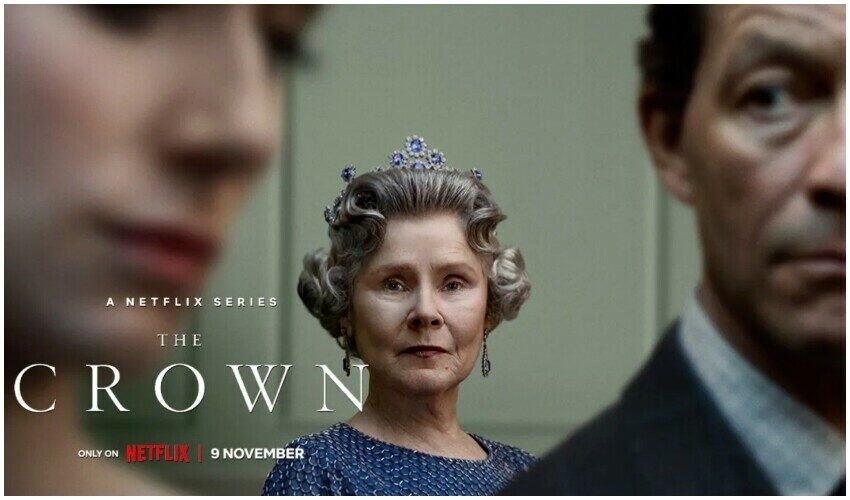As the influence of the screen – television, cinema and streaming – continues to increase, debates about the negative impacts of television continue to rage. Still, television plays an important role in public relations (PR). Ahead of World Television Day, we are spotlighting some movies and TV shows you can enjoy this weekend with noteworthy PR lessons for personalities, politicians and business executives.
The Crown
“The Crown” is a historical drama television series based on the reign of Queen Elizabeth II. During the Queen’s 70-year reign, the royal family dwelt with several crises from wars, to economic and family crises. Queen Elizabeth II delivered countless speeches and the family used media extensively.
One of this series’s many valuable public relations lessons is the importance of media monitoring in gauging public opinion.
From the series, one learns that Queen Elizabeth II and the royal family made time every morning – mostly during breakfast – to review newspaper headlines. Usually, the royal family adjudged a trip abroad successful based on the headlines. The press secretaries and media aides of royals also advise members of the royal family of likely media reactions to their actions or inactions so that they can make informed choices – especially in crises. Public opinions conveyed through the media also indicate the popularity ratings of prime ministers, and the Queen paid close attention to them being the head of government.
There are other PR lessons such as personal branding. For instance, the latest season sees the Prince of Wales (now King Charles III) take deliberate steps to show the public who he is after his separation and later divorce from Princess Diana.
Miss Sloane
Also a political thriller, the film follows the titular character, Elizabeth Sloane (Jessica Chastain), a fierce lobbyist.
Miss Sloane’s firm is approached to lead the opposition to a proposed Heaton-Harris bill that would expand background checks on gun purchases, specifically by targeting female voters. She declines and chooses to work in support of the bill.
The film has PR lessons on ethics, agenda setting and framing as well as media appearances. But perhaps the most important lesson is to anticipate your opponent’s move and prepare to response – Miss Sloane surprised her opponents in the end, and they did not see it coming.
Miss Sloane is a good movie for those in government relations and public affairs roles.
Fyre: The Greatest Party That Never Happened
This is an especially good case study with PR lessons for tech entrepreneurs. “Fyre: The Greatest Party That Never Happened” is a documentary about the Fyre Music Festival which was touted as ‘the event of the decade.‘
The event was highly promoted using advertising and influencer marketing using supermodels including Kendall Jenner and Bella Hadid. Sadly, the event did not hold and has been described as ‘the world’s biggest festival scam.’
So, what went wrong?
- Putting the cart before the horse – The organisers, tech entrepreneur Billy McFarland and his partner, rapper Ja Rule, launched a marketing campaign and began selling tickets before fully crystallising the event concept. They skipped the planning and budgeting phase and generally went with the flow.
- Lack of requisite skills – A lot of decisions were vested in the Fyre marketing director who had no event management skills. By the time he decided to hire experts to do the job, the timing was short and Fyre realised that they did not have the funds to deliver the calibre of the event advertised.
- Pride – When it became clear that there would be nothing luxurious about the music concert, MC Farland’s team advised him to communicate that to those who had bought tickets, but he allowed his ego to get in the way and declined. Had he listened, the damage would have been minimised.
- No crisis communication plan – For a music festival or concert, standard PR practice would include conducting a pre-event risk assessment and the development of a crisis response plan. For the Fyre Festival, there was none.
- Ethics – The entire event was built on lies and fluff. The advertising made false promises. It claimed that the music festival would hold on a private island once owned by Pablo Escobar and McFarland lied that he had bought the island.
In the end, “Fyre: The Greatest Party That Never Happened” had as much negative publicity as the positive publicity it generated when the concert was announced and overall huge consequences including lawsuits and the business being forced into bankruptcy.
House of Cards
Though “House of Cards” is a political thriller, it is also a great example of ‘how not to do PR.’ The most valuable PR lesson from “House of Cards,” is, to tell the truth.
The entire story is based on the cover-up of an incident by Congressman Frank Underwood (Kevin Spacey) whilst he was House Majority Whip. Underwood told lie after lie to cover up that incident for his entire political career and put his Communications Director in a difficult position. The events led to Underwood’s ruthless manipulation of power, betrayal and eventual downfall.
Ivy Lee, the father of modern Public Relations once said:
Tell the truth because sooner or later the public will find out anyway. And if the public doesn’t like what you are doing, change your policies and bring them into line with what people want.
“House of Cards” validates Lee’s statement.
There are other lessons including the need to be prepared for interviews and crises, having good media relations but not mixing business with pleasure and that social media can be a powerful tool for the underdog. Finally, like Underwood’s director of communications and press secretary, Seth Grayson (Derek Cecil), learn to be careful whom you work for.
Scandal
“Scandal” follows the story of Olivia Pope (Kerry Washington) who transitioned from White House Director of Communications to running her crisis management firm called “Olivia Pope & Associates.” Though some of Ms Pope’s methods were unconventional and sometimes unethical, there are valuable PR lessons to be learnt from the series.
Olivia was a master at media training, which is critical for managing any crisis. She ensured that her clients were prepped to answer tough media questions and to do so confidently. Because crises rapidly evolve and attract a lot of media attention, Olivia and her team always kept a pulse on issues by watching the news and following conversations on social media. The team anticipated changes, actions and consequences, and had a plan B for every scenario.
Ms Pope also emphasised the importance of looks. She once said, “In a case like this, perception is more important than evidence. The truth does not matter. He looks guilty, he is guilty.” On her part, she embodied the statement, ‘looking good is good business.’
Long Shot
“Long Shot” is a 2019 film about an unemployed journalist Fred Flarsky (Seth Rogen) who became the speechwriter to the United States Secretary of State Charlotte Field (Charlize Theron). Whilst a romantic comedy, “Long Shot” had a lot to offer in terms of speechwriting.
Here are the top five tips from the movie:
- Know the speaker you are writing for, whether a politician or business executive. This includes their backgrounds, passions, philosophies, hopes and dreams.
- Build a bank of the politician or business executives’ favourite stories so that you can build them into speeches when a personal touch is needed.
- Know the audience you are writing for. This is a given for any form of communication.
- Write with a balance. The idea is to appeal to the head and heart of the audience. The speaker’s personal stories will help you write for the heart and facts for the head.
- Visualise the speaker delivering the speech so that you can write it to their style of speaking.


